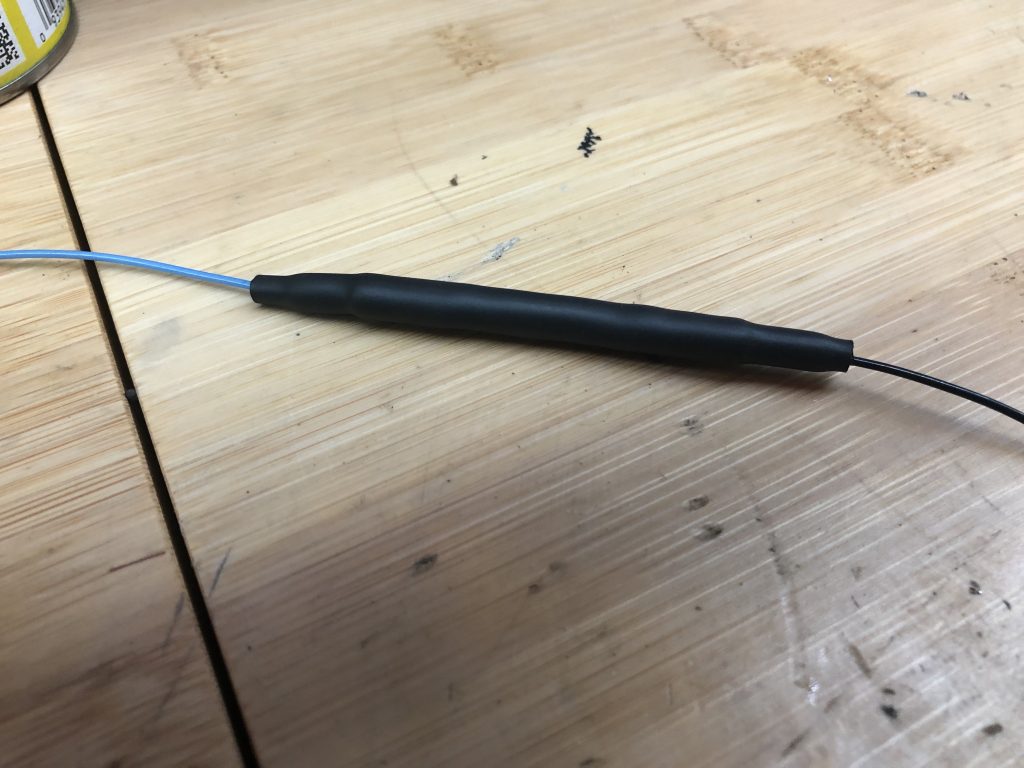For the dash buttons and indicators, I’m tapping off the power wires on the load cells and running some 22AWG wire back to the dash. The power wires on the load cells are all 14AWG though and will use various size fuses (many of which will be too large to protect a 22AWG wire). I need to provide protection for these small wire in case they short to ground. Without separate protection for these wires, they could get hot enough to burn before blowing the fuse in the power cell. I could of course use a bunch of inline fuses, but a more reliable and compact way is to use fusible links. A fusible link is nothing more than a short section of smaller wire that will melt before the larger wire can get hot. Like a fuse, this section of smaller wire needs to be enclosed to prevent the melting wire from catching something nearby on fire.
The general rule is to use a section of wire 4 wire gauges smaller than the wire you want to protect. Since I’m using all 22AWG wires from the load cells to the dash, I spliced in a short section of 26AWG wire.
I slipped a section of silicone impregnated fiberglass sleeve over the 26AWG wire. This won’t burn and will contain the heat if the fusible link ever melts.
To keep everything together and limit flexing of the 26AWG wire, I slipped a section of heat shrink over the whole thing.
I fabricated six of these for the loads at the front of the car that I will tap into: headlights (low and high beams), parking lights, turn signals (left and right), and fan.



